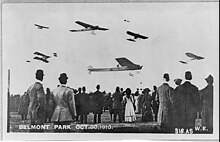
The Royal Aero Club (RAeC) is the national co-ordinating body for air sport in the United Kingdom. It was founded in 1901 as the Aero Club of Great Britain, being granted the title of the "Royal Aero Club" in 1910.
This is a list of aviation-related events from 1910:

This is a list of aviation-related events from 1912:
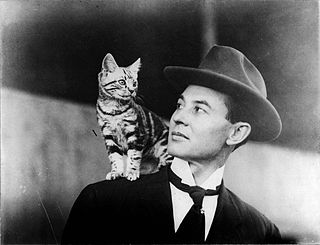
John Bevins Moisant was an American aviator, aeronautical engineer, flight instructor, businessman, and revolutionary. He was the first pilot to conduct passenger flights over a city (Paris), as well as across the English Channel, from Paris to London. He co-founded an eponymous flying circus, the Moisant International Aviators.
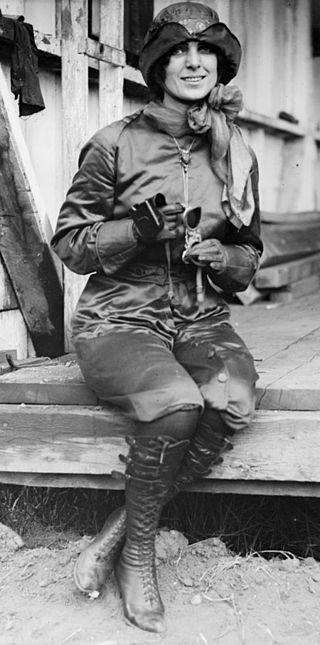
Harriet Quimby was an American pioneering aviator, journalist, and film screenwriter. In 1911, she became the first woman in the United States to receive a pilot's license and in 1912 the first woman to fly across the English Channel. Although Quimby died at the age of 37 in a flying accident, she strongly influenced the role of women in aviation.
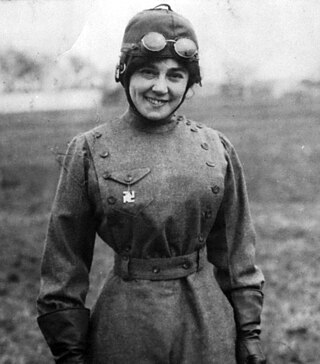
Matilde Josephine Moisant was an American pioneer aviator, the second woman in the United States to obtain a pilot's license.

The Aero Club of America was a social club formed in 1905 by Charles Jasper Glidden and Augustus Post, among others, to promote aviation in America. It was the parent organization of numerous state chapters, the first being the Aero Club of New England. It thrived until 1923, when it transformed into the National Aeronautic Association, which still exists today. It issued the first pilot's licenses in the United States, and successful completion of its licensing process was required by the United States Army for its pilots until 1914. It sponsored numerous air shows and contests. Cortlandt Field Bishop was president in 1910. Starting in 1911, new president Robert J. Collier began presenting the Collier Trophy.
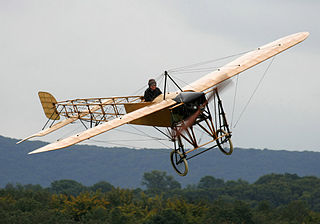
The Blériot XI is a French aircraft from the pioneer era of aviation. The first example was used by Louis Blériot to make the first flight across the English Channel in a heavier-than-air aircraft, on 25 July 1909. This is one of the most famous accomplishments of the pioneer era of aviation, and not only won Blériot a lasting place in history but also assured the future of his aircraft manufacturing business. The event caused a major reappraisal of the importance of aviation; the English newspaper The Daily Express led its story of the flight with the headline "Britain is no longer an Island".
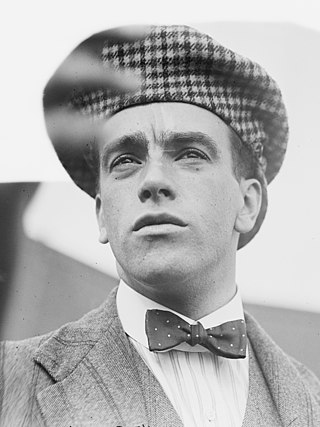
Claude Grahame-White was an English pioneer of aviation, and the first to make a night flight, during the Daily Mail-sponsored 1910 London to Manchester air race.

Isidore Auguste Marie Louis Paulhan, was a French aviator. He is known for winning the first Daily Mail aviation prize for the first flight between London and Manchester in 1910.

The Wright Exhibition Team was a group of early aviators trained by the Wright brothers at Wright Flying School in Montgomery, Alabama in March 1910.
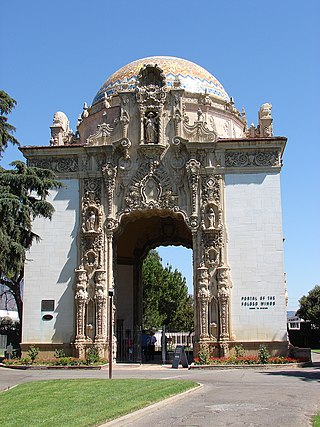
The Portal of the Folded Wings Shrine to Aviation is in Burbank, California. The shrine is a 75-foot-tall (23 m) structure of marble, mosaic, and sculpted figures and is the burial site for fifteen pioneers of aviation. Designed by Kenneth A. MacDonald Jr. and sculptor, Federico Augustino Giorgi, it was built in 1924 as the entrance to Pierce Brothers Valhalla Memorial Park Cemetery. Aviation enthusiast James Gillette was impressed by the rotunda's close proximity to the airport and Lockheed Aircraft Company. He conceived a plan to use the structure as a shrine to aviation and worked to that end for two decades. It was dedicated in 1953 by aviation enthusiasts who wanted a final resting place for pilots, mechanics, and other pioneers of flight.
Dedicated to the honored dead of American aviation on the 50th anniversary of powered flight, December 17, 1953, by Lieutenant General Ira C. Eaker USAF (retired). Beneath the memorial tablets in this sacred portal rest the cremated remains of famous flyers who contributed so much to the history and development of aviation. The bronze plaques upon the marble walls memorialize beloved Americans who devoted their lives to the advancement of the air age. Administered under the auspices of the Brookins–Lahm–Wright Aeronautical Foundation, this shrine stands as a lasting tribute.
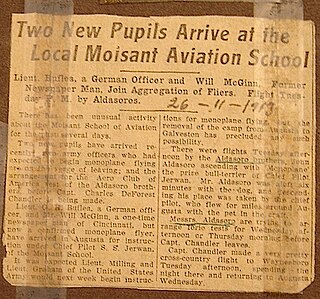
The Moisant Aviation School was a school in the early days of aviation founded by Alfred Moisant at Hempstead, Long Island, New York. Alfred and his brother John Bevins Moisant formed the Moisant International Aviators, a flying circus which toured the United States, Mexico and El Salvador. John had learned to fly in France with Louis Bleriot but died in 1910 in an accident. The school had six Bleriot monoplanes equipped with 50 horse power Gnome motors.

The 1910 London to Manchester air race took place between two aviators, each of whom attempted to win a heavier-than-air powered flight challenge between London and Manchester. The race had first been proposed by the Daily Mail newspaper in 1906. The £10,000 prize was won in April 1910 by Frenchman Louis Paulhan.
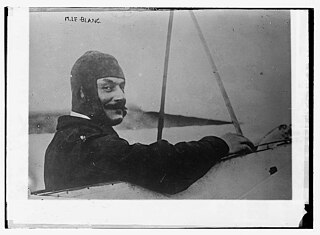
Alfred Leblanc was a pioneer French aviator.

The Gordon Bennett Aviation Trophy is an international airplane racing trophy that was awarded by James Gordon Bennett Jr., the American owner and publisher of the New York Herald newspaper. The trophy is one of three Gordon Bennett awards: Bennett was also the sponsor of an automobile race and a ballooning competition.

Charles Keeney Hamilton was an American pioneer aviator nicknamed the "crazy man of the air". He was, in the words of the U.S. Centennial of Flight Commission, "known for his dangerous dives, spectacular crashes, extensive reconstructive surgeries, and ever present cigarette" and was "frequently drunk". He survived more than 60 crashes.

The United States Aeronautical Reserve (U.S.A.R.) was an early aviation organization created by Harvard University’s Aero Club on September 8, 1910. The founder was John H. Ryan, and the General Secretary Richard R. Sinclair. The earliest aviators and others to enroll near the founding date were: “Glen H. Curtiss, Wilbur Wright, Harry S. Harkness, Augustus Post, Clifford B. Harmon, Allan R. Ryan, Herbert L. Saterlee, ex-governor Curtis Guild, Jr.,, Edwin Gould, Charles K. Hamilton, Horace F. Karnay, John G. Stratton, George M. Cox, Gen. Nelson A. Miles, Commodore John H. Hubbard, Charles F. Willard, Charles J. Glidden, Walter Brookins, Ralph J. Stone, William Hilliard, Cromwell Dixon, Samuel F. Perkins, Capt. Thomas F. Baldwin, Greeley S. Curtiss, General W. A. Bancroft, and Adams D. Clafton.”, Recruiting stations were at Harvard University, in Boston, Massachusetts; Mineola, Long Island; and Belmont Park, Long Island.
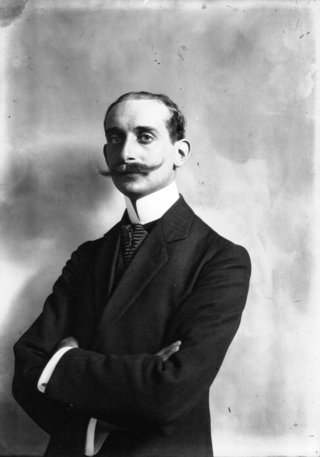
Émile Eugène Aubrun was a French aviator who received national attention for finishing second in the 1910 Circuit de l'Est.

